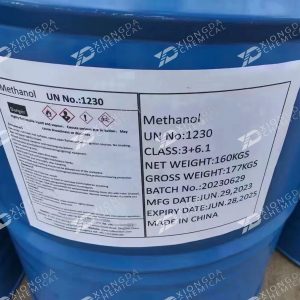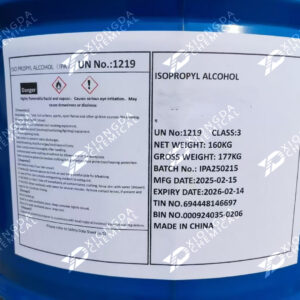- Applications:
- Solvent: Used as a solvent for paints, coatings, varnishes, and adhesives due to its ability to dissolve oils, resins, and cellulose.
- Plasticizer: Butanol is used as a plasticizer in the production of flexible plastics such as PVC.
- Fuel Additive: Acts as a fuel additive to improve fuel efficiency and reduce emissions.
- Intermediate in Chemical Synthesis: Used as a raw material in the synthesis of butyl acrylate, butyl acetate, and other chemicals.
- Antifreeze: Isopropyl alcohol can be used in antifreeze formulations for vehicles and refrigeration units.
- Hazard Identification:
- Flammability: Butanol is a highly flammable liquid and vapor, posing a significant fire hazard.
- Eye and Skin Irritation: May cause irritation to the eyes and skin upon prolonged contact.
- Health Hazards: Inhalation of vapors or ingestion can cause dizziness, drowsiness, headaches, and central nervous system depression. May cause nausea and vomiting if ingested.
- Inhalation Risk: Inhalation of high concentrations of vapors can lead to respiratory irritation and central nervous system effects.
- Environmental Hazards: May cause long-term adverse effects in aquatic environments if released in large quantities.
- Precautionary Statements:
- Fire Prevention: Keep away from heat, sparks, open flames, and other sources of ignition. Use explosion-proof electrical equipment and ensure good ventilation.
- Personal Protection: Wear protective gloves, eye protection, and face protection when handling Butanol. Ensure adequate ventilation in the working area to avoid inhalation of vapors.
- In Case of Eye Contact: Rinse cautiously with water for several minutes. Remove contact lenses if present and easy to do. Continue rinsing. Seek medical attention if irritation persists.
- In Case of Inhalation: Move the person to fresh air and keep comfortable for breathing. Seek medical attention if symptoms persist.
- In Case of Skin Contact: Wash the skin thoroughly with soap and water. If irritation or rash develops, seek medical attention.
- If Swallowed: Call a poison center or doctor immediately. Do not induce vomiting unless directed by medical personnel.
- Handling Spills: Eliminate all sources of ignition and contain the spill with inert materials. Dispose of in accordance with local environmental regulations.








